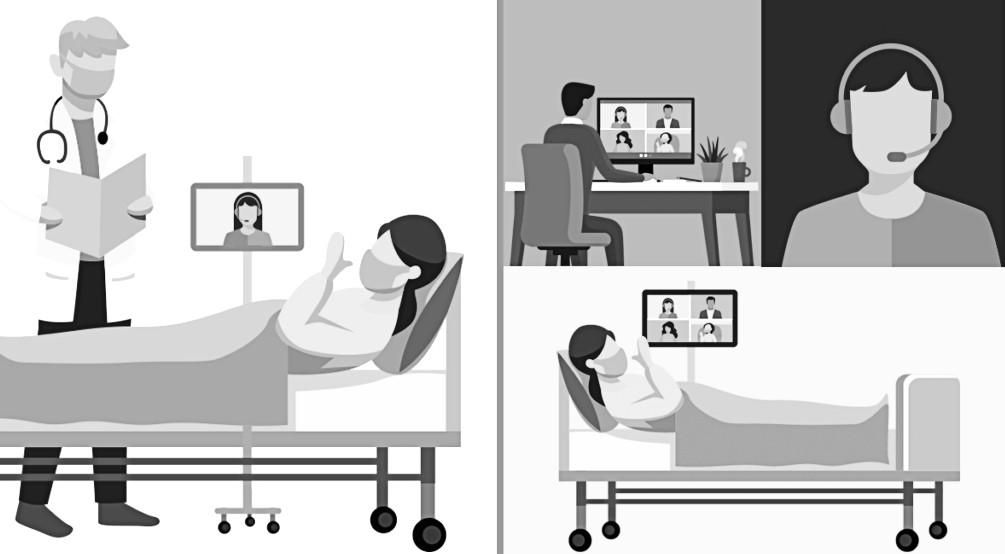Difference Between Video Remote Interpreting (VRI) and Virtual Interpreting
As our society continues to evolve, we have been witnessing an increasing number of interpretation methods. Firstly, Video Remote Interpreting (VRI) was invented primarily because of the advancement of our technology. It is a transformational technology that allows people using different languages to break communication barriers instantly through an app. Recently, Virtual Interpreting has begun to emerge into our society mostly due to the COVID-19 pandemic.
Once our whole world was struck by the pandemic, medical offices as well as business workplaces immediately wanted and were legally mandated to reduce the number of people in a single room. The interpretation industry was heavily impacted by this. In turn and as a response, Virtual Interpreting was built for telehealth and telework needs. Doctors are now able to have a conversation with their patients who use different languages through their preferred video conferencing platform as the interpreter will also be present through the video conferencing platform to facilitate the communication.
Now, it is understandably difficult to distinguish between Video Remote Interpreting (VRI) and Virtual Interpreting as their descriptions can lead people into thinking they are similar, but their functionalities and purposes are different. As a medical office practitioner or business decision-maker, it is vital to be able to distinguish between Video Remote Interpreting (VRI) and Virtual Interpreting to ensure the complete removal of language and cultural barriers and to prevent misunderstanding of any type.
Before we go into details, to sum the difference between Video Remote Interpreting (VRI) and Virtual Interpreting in a sentence: Video Remote Interpreting (VRI) is to be used when the American Sign Language user is in the same room as the doctor, whereas Virtual Interpreting is to be used when the American Sign Language user is not in the same room as the doctor.
Video Remote Interpreting (VRI): American Sign Language user goes into a medical appointment with a doctor. The doctor pulls up a Video Remote Interpreting (VRI) device and connects to an American Sign Language remote interpreter, who will facilitate the communication through the Video Remote Interpreting (VRI) device.
Virtual Interpreting: American Sign Language user has a telehealth appointment with a doctor through Google Meets. The American Sign Language user, sign language remote interpreter, and the doctor will all enter the Google Meets’ video meeting and the sign language interpreter will facilitate the communication through Google Meets.
Although both Video Remote Interpreting (VRI) and Virtual Interpreting are excellent technologies, there is no more effective substitute for On-Site Interpreting. There are so many variables to communication quality, including the ability to read the person’s facial expressions multidimensionally, which makes On-Site Interpreting the most effective and superior method. Sometimes, it is simply not possible to utilize an on-site sign language interpreter due to various possible reasons:
- American Sign Language user walks in for an urgent appointment and there is no time to wait for an American Sign Language interpreter to arrive at the premises.
- The appointment is at a location where there is no sign language interpreter available.
- The appointment is anticipated to last no more than 15 minutes, making it economically unfeasible to utilize an on-site interpreter.
- Pandemic. It is best to reduce the number of people in a room as much as possible during a pandemic.
- There are many other possible reasons that may disallow an office from utilizing a sign language interpreter on the premises.
FIA Interpreting is one of the top providers nation-wide for all On-Site Interpreting, Video Remote Interpreting (VRI), and Virtual Interpreting. They have an extraordinarily large network of interpreters for more than 100 different languages, including American Sign Language. To learn more about them, visit their website at www.frederickinterpreting.com or contact them by calling them at 240-409-7972 or emailing them at schedule@frederickinterpreting.com!







0 Comments